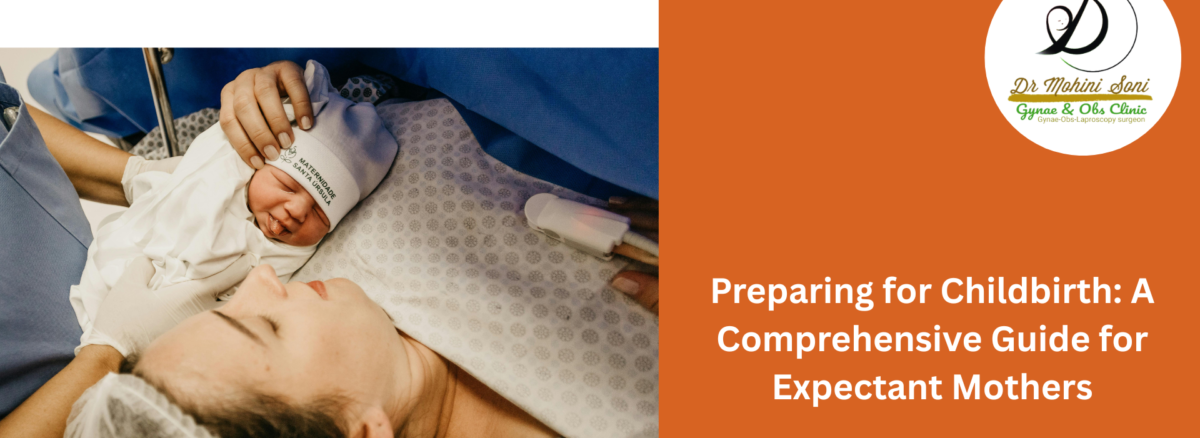Bringing a new life into the world is a transformative experience that comes with both excitement and challenges. Proper preparation can help expectant mothers feel more confident, informed, and ready for the journey ahead. This comprehensive guide covers essential aspects of childbirth preparation, from prenatal care to postpartum recovery.
1. Understanding Pregnancy and Fetal Development
During pregnancy, your body undergoes significant changes to support your growing baby. Understanding each trimester’s developments can help you prepare for what to expect:
- First Trimester (Weeks 1-12): Early symptoms include nausea, fatigue, and mood swings. Fetal organs begin to form.
- Second Trimester (Weeks 13-26): Many mothers experience an energy boost, and fetal movements become noticeable.
- Third Trimester (Weeks 27-40): The baby gains weight rapidly, and the body prepares for labor.
Read Also : Guide for Maternity care
2. Importance of Prenatal Care
Regular prenatal check-ups are crucial for monitoring both maternal and fetal health. Healthcare providers assess weight, blood pressure, and fetal growth, while ultrasounds and tests help detect any complications early. Proper prenatal care reduces risks and ensures a smooth pregnancy journey.
3. Nutrition and Exercise During Pregnancy
Maintaining a balanced diet is essential for a healthy pregnancy. Key nutrients include:
- Folic Acid: Supports neural tube development.
- Iron: Prevents anemia and supports oxygen supply.
- Calcium: Strengthens bones and teeth.
- Protein: Supports fetal growth.
Safe exercises, such as prenatal yoga, swimming, and walking, help maintain fitness and prepare the body for labor. Always consult a healthcare provider before starting any exercise regimen.
4. Creating a Birth Plan
A birth plan outlines your preferences for labor and delivery, helping you communicate your wishes to healthcare providers. Consider including:
- Preferred birthing environment (hospital, birthing center, or home birth)
- Pain management options (epidural, breathing techniques, hydrotherapy)
- Labor support preferences (partner, doula, or family members)
- Newborn care choices (delayed cord clamping, immediate skin-to-skin contact)
5. Recognizing the Signs of Labor
Understanding labor signs can help you prepare for delivery. Common indicators include:
- Braxton Hicks Contractions: Irregular contractions that prepare the body for labor.
- Water Breaking: The amniotic sac ruptures, signaling the start of labor.
- Regular Contractions: Contractions become consistent and intensify over time.
- Cervical Dilation: The cervix opens to allow the baby’s passage.
6. Managing Labor Pain
Pain management options vary based on personal preferences and medical recommendations. Techniques include:
- Natural Pain Relief: Breathing exercises, meditation, massage, and hydrotherapy.
- Medical Pain Relief: Epidural anesthesia, spinal blocks, or analgesics.
- Movement and Positioning: Changing positions, using birthing balls, and walking can ease discomfort.
7. Postpartum Recovery and Care
Recovery after childbirth requires rest, nutrition, and support. Key aspects include:
- Physical Recovery: Healing from vaginal birth or C-section, managing perineal pain, and handling postpartum bleeding.
- Emotional Well-being: Postpartum depression and anxiety are common; seeking support from loved ones or professionals is important.
- Breastfeeding and Newborn Care: Learning about lactation, proper latch techniques, and infant care routines helps ensure a smooth transition.
8. Preparing Mentally and Emotionally
Childbirth is not only a physical experience but also an emotional journey. Techniques for mental preparation include:
- Education: Attending childbirth classes to understand the labor process.
- Support System: Engaging with partners, family, and support groups.
- Stress Management: Practicing mindfulness, meditation, and relaxation techniques.
9. Packing Your Hospital Bag
Having a well-packed hospital bag ensures you are prepared for labor and postpartum stay. Essentials include:
- Comfortable clothing and maternity essentials.
- Toiletries and personal care items.
- Important documents and insurance information.
- Baby essentials like onesies, blankets, and diapers.
- Snacks and hydration for energy during labor.
10. Partner’s Role in Childbirth
Partners play a crucial role in providing emotional and physical support. Ways to be involved include:
- Attending prenatal classes together.
- Helping with relaxation techniques during labor.
- Assisting in postpartum care and newborn responsibilities.
Conclusion
Preparing for childbirth involves education, planning, and self-care. By staying informed and seeking support, expectant mothers can navigate pregnancy and labor with confidence. Every birth experience is unique, so focus on what feels right for you and your baby. If you have any concerns, consult your healthcare provider for personalized guidance.
With the right preparation, childbirth can be a beautiful and empowering journey leading to the joy of welcoming your little one into the world.

